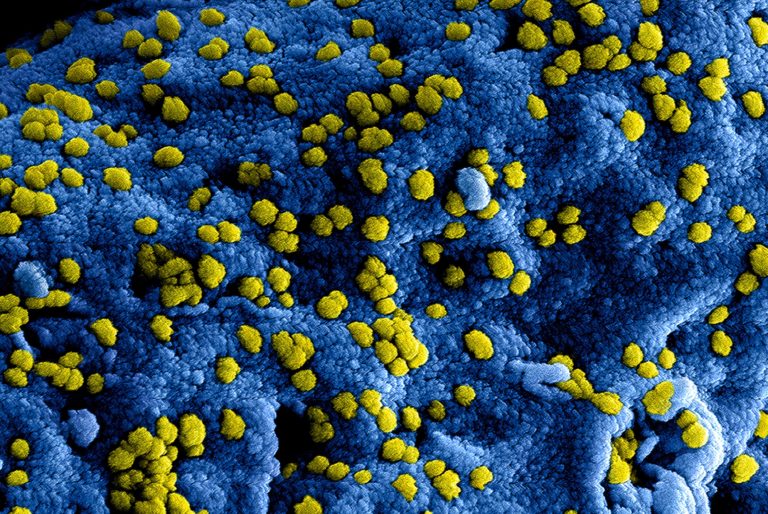April 22, 2020: “Novartis announced that the US Food and Drug Administration (FDA) granted Regenerative Medicine Advanced Therapy (RMAT) designation to Kymriah® (tisagenlecleucel), for an investigational new indication to treat patients with relapsed or refractory (r/r) follicular lymphoma (FL).
Kymriah, which is designed to be a one-time treatment, is the first-ever FDA-approved CAR-T cell therapy. The potential approval in r/r FL will be the third indication for Kymriah, which also has indications in r/r pediatric and young adult acute lymphoblastic leukemia (ALL), and r/r adult diffuse large B-cell lymphoma (DLBCL).
“This designation supports the advancement of Kymriah, which could potentially address an unmet need in certain patients with follicular lymphoma, as we strive to reimagine medicine at Novartis. These patients are often faced with the burden of several years of various treatments as their disease continues to progress.” said John Tsai, MD, Head of Global Drug Development and Chief Medical Officer, Novartis.
Follicular lymphoma, the second most common form of non-Hodgkins lymphoma (NHL) is an indolent lymphoma, and represents approximately 22% of NHL cases1. Despite new treatments that improve overall survival, FL is regarded as an incurable malignancy with a relapsing and remitting pattern.
Although patients in third or later line treatment for FL have multiple systemic therapies available, the efficacy of these regimens drops off rapidly in later lines. Throughout the lifetime of a relapsing FL patient, they may be exposed to a median of five lines of prior treatment, with an upper range of 12 lines. There also is an unmet need in people who are refractory to treatment or quickly relapse, who may exhaust treatment options while they are still healthy enough to receive active treatment.
The RMAT designation program is part of the 21st Century Cures Act. The program was created to expedite the development and review of regenerative medicine therapies intended to treat, modify, reverse or cure a serious condition. The FDA granted RMAT designation for Kymriah in FL based on preliminary clinical evidence from the ELARA clinical trial, an ongoing multi-center, phase II study to determine the efficacy and safety of tisagenlecleucel in adult patients with relapsed or refractory FL.
Kymriah was developed in collaboration with the Perelman School of Medicine at the University of Pennsylvania, a strategic alliance between industry and academia which was first-of-its-kind in CAR-T research and development.
Kymriah® (tisagenlecleucel) US Important Safety information
Kymriah may cause side effects that are severe or life-threatening, such as Cytokine Release Syndrome (CRS) or Neurological Toxicities. Patients with CRS may experience symptoms including difficulty breathing, fever (100.4°F/38°C or higher), chills/shaking chills, severe nausea, vomiting and diarrhea, severe muscle or joint pain, very low blood pressure, or dizziness/lightheadedness. Patients may be admitted to the hospital for CRS and treated with other medications.
Patients with neurological toxicities may experience symptoms such as altered or decreased consciousness, headaches, delirium, confusion, agitation, anxiety, seizures, difficulty speaking and understanding, or loss of balance. Patients should be advised to call their healthcare provider or get emergency help right away if they experience any of these signs and symptoms of CRS or neurological toxicities.
Because of the risk of CRS and neurological toxicities, Kymriah is only available through a restricted program under a Risk Evaluation and Mitigation Strategy (REMS) called Kymriah REMS.
Serious allergic reactions, including anaphylaxis, may occur after Kymriah infusion. Kymriah can increase the risk of life-threatening infections that may lead to death. Patients should be advised to tell their healthcare provider right away if they develop fever, chills, or any signs or symptoms of an infection.
Patients may experience prolonged low blood cell counts (cytopenia), where one or more types of blood cells (red blood cells, white blood cells, or platelets) are decreased. The patient’s healthcare provider will do blood tests to check all of their blood cell counts after treatment with Kymriah. Patients should be advised to tell their healthcare provider right away if they get a fever, are feeling tired, or have bruising or bleeding.
Patients may experience hypogammaglobulinemia, a condition in which the level of immunoglobulins (antibodies) in the blood is low and the risk of infection is increased. It is expected that patients may develop hypogammaglobulinemia with Kymriah, and may need to receive immunoglobulin replacement for an indefinite amount of time following treatment with Kymriah. Patients should tell their healthcare provider about their treatment with Kymriah before receiving a live virus vaccine.
After treatment with Kymriah, patients will be monitored lifelong by their healthcare provider, as they may develop secondary cancers or recurrence of their cancer.
Patients should not drive, operate heavy machinery, or do other dangerous activities for eight weeks after receiving Kymriah because the treatment can cause temporary memory and coordination problems, including sleepiness, confusion, weakness, dizziness, and seizures.
Some of the most common side effects of Kymriah are difficulty breathing, fever (100.4°F/38°C or higher), chills/shaking chills, confusion, severe nausea, vomiting and diarrhea, severe muscle or joint pain, very low blood pressure, dizziness/lightheadedness, and headache. However, these are not all of the possible side effects of Kymriah. Patients should talk to their healthcare provider for medical advice about side effects.
Prior to a female patient starting treatment with Kymriah, their healthcare provider may do a pregnancy test. There is no information available for Kymriah use in pregnant or breast-feeding women.
Therefore, Kymriah is not recommended for women who are pregnant or breast feeding. Patients should talk to their healthcare provider about birth control and pregnancy.
Patients should tell their healthcare provider about all the medicines they take, including prescription and over-the-counter medicines, vitamins, and herbal supplements.
After receiving Kymriah, patients should be advised that some commercial HIV tests may cause a false-positive test result.
Patients should also be advised not to donate blood, organs, or tissues and cells for transplantation after receiving Kymriah.”
Please see the full Prescribing Information for Kymriah, including Boxed WARNING, and Medication Guide at www.Kymriah.com
https://www.novartis.com/news/media-releases/novartis-kymriah-receives-fda-regenerative-medicine-advanced-therapy-designation-follicular-lymphoma











